All the information you need to ensure sweet sales in the cake and biscuit category
1. Sweet biscuits are worth £493m in convenience
2. It pays to think outside the (cake) box
3. Six percent of products account for 80% of sales
4. One in three households consumes chocolate digestive biscuits
5. Demand for indulgent treats is tipped to grow
6. Price competition is growing
7. Value goes “beyond price”
8. HFSS presents opportunities for convenience channel
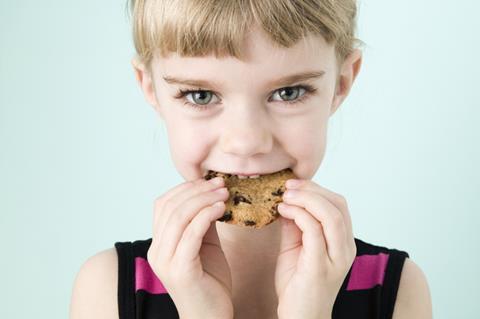
1. Sweet biscuits are worth £493m in convenience
NielsenIQ & Kantar
Biscuits are big business for Britain’s convenience store operators. Nearly one in every £5 spent on sweet biscuits in the UK goes through a c-store’s tills. Total sales are worth £2.5bn, having grown by 4.5% year-on-year; sales through convenience are up 11.2% to £493m (NielsenIQ & Kantar).
“The convenience channel is integral to the biscuit category,” says Aslı Özen Turhan, chief marketing officer at McVitie’s brand-owner Pladis. “This is, in part, because c-stores are often best placed to serve popular shopper missions. For example, c-stores tend to have longer opening hours, so are ideal for time-pressed shoppers looking to pop in after work.”
Of course, choice of biscuit, pack format, brand and the like largely depends on the area and clientele a c-store is serving – for example, stores situated close to schools may do a roaring trade in healthier snacks that meet education authorities’ healthy eating plans, while those close to train stations might sell more single portion packs for those looking for a quick bite on the go.
Tastes are changing, too. “We used to sell a lot of Tunnocks biscuits – things like their Tea Cakes and Caramels which are made here in Scotland – but they don’t sell nearly as well as they used to,” says Linda Williams, who owns the Premier Broadway Convenience Store in Oxgangs, southwest Edinburgh. “I think they’re falling out of fashion because they are something older people tend to buy.”
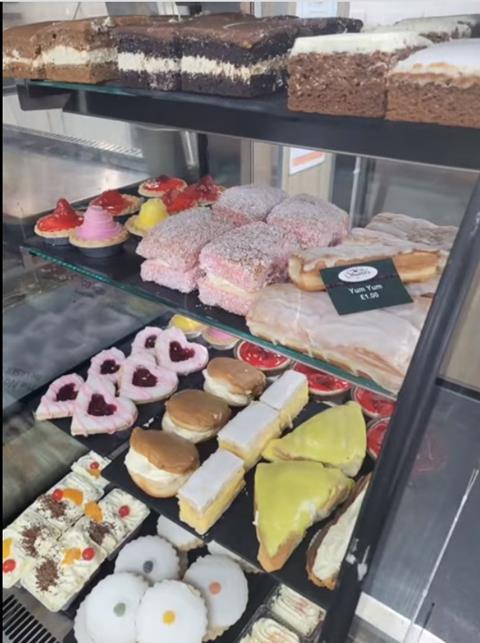
2. It pays to think outside the (cake) box
Instead, Linda tries to offer her customer products that aren’t widely available elsewhere, at a reasonable price. “We have a range of biscuits and cakes from two local bakeries that do very well and we have fresh cake deliveries every other day that do well too,” she explains. “Our fudge doughnuts with confectioners cream always do very well, especially with the workmen who come in to get their lunch from the deli.”
She’s also found that it pays to think outside the (cake) box when it comes to deciding which products to pitch at the passing lunch crowd. “I buy frozen gateaux and cut them into slices and sell them for £2 a portion,” says Linda. “It’s quick and easy and I make a good profit. The other advantage is that this is something that shoppers won’t see anywhere else, so it helps us compete with other stores nearby.”
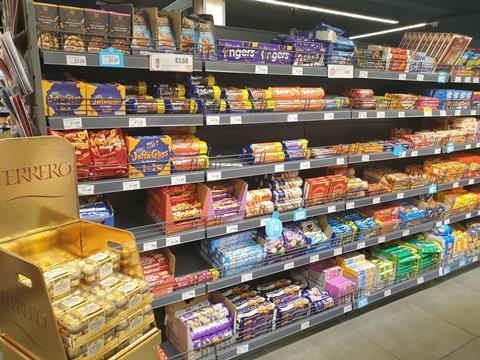
3. Six percent of products account for 80% of sales
NielsenIQ
Still, you can’t ignore the classics. “Prioritising the bestselling lines is independent retailers’ ticket to maximising sales,” argues Özen Turhan, pointing to NielsenIQ data that shows that 80% of market value comes from just 6% of products [52 w/e 26 June 2022]. “The classic, core biscuit ranges from established brands such as McVitie’s are driving the greatest growth.”
She adds that the McVitie’s brand accounts for six of the top 10 best-selling biscuit brands in convenience, with lines such as McVitie’s Digestives, Jaffa Cakes, Chocolate Digestive and Rich Tea must-stock items for independent retailers. “Retailers not stocking these crucial lines are missing out on a share of a £251m sales opportunity [NielsenIQ],” says Özen Turhan.
“To elevate sales as much as possible, we’d encourage independent retailers to invest in their biscuit fixture as a well-merchandised display, located in high footfall areas. This can heavily influence shopper purchasing decisions. It’s about making the shopper experience as seamless as possible, so themed space and signage, and offering secondary sightings – such as at point of sale – are essential considerations in order to maximise sales.”
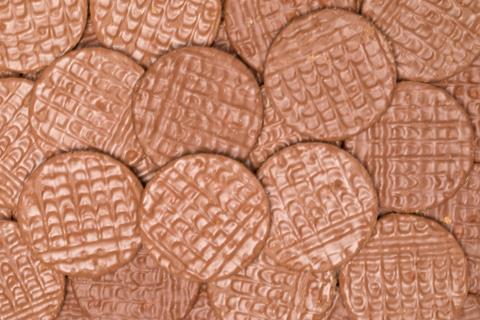
4. One in three households consumes chocolate digestive biscuits
That said, offering something new can help turn heads and drive incremental sales, particularly when it comes to chocolate biscuits. “One in three households consume chocolate digestive biscuits,” says Michelle Frost, general manager for Mars Chocolate Drinks & Treats, citing Kantar data for the year to 20 February 2022 and pointing to the December launch of Galaxy Milk Chocolate and Milk Chocolate Orange Digestive Biscuits.
“However, branded choice (in chocolate biscuits) has always been extremely limited. There has been very little challenge to the market leader in recent years, even though research would suggest that there is space for a market challenger brand to occupy. Particularly one that reaches different occasions and appeals to a wider spectrum of shopper demographics.”

5. Demand for indulgent treats is tipped to grow
Given that many manufacturers are expecting demand for indulgent treats to rise as the cost-of-living crisis continues to bite, space in the market for comforting cakes and biscuits could well grow. “We’re seeing a so-called ‘lipstick effect’ surface for biscuits,” comments Özen Turhan at Pladis.
“With economic uncertainty manifesting itself once more, shoppers are continuing to opt for the bestselling, everyday biscuits which consumers perceive as a permissible treat or ‘affordable indulgence’. And, when tucking into these little treats, they’ll turn to established, heritage brands – such as McVitie’s – for familiar favourites which they know and love.”
Indeed, in past downturns consumers have focused more on comfort food over healthy eating. This might explain why Anita Nye, store manager at the Premier Store on Eldred Drive in Orpington, southeast London, is doubtful of the long-term prospects of the glut of reduced sugar biscuits launched by the big brands over the past year.
“We’ve really struggled to sell things like that, even when we have them on promotion,” says Anita. “People tend to pick them up once and then don’t buy them again. At the end of the day, when people buy treats like this the most important thing is that they taste good. Where we are, a lot of people are on benefits and price and taste are the main things they look at.”
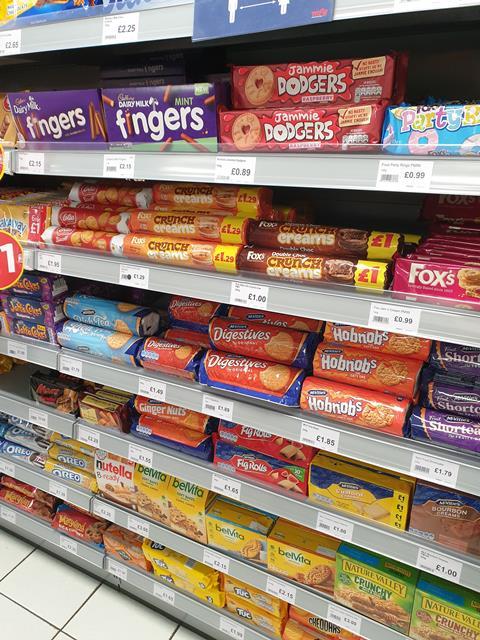
6. Price competition is growing
Linda up in Oxgangs agrees. “We have an Aldi right behind us so we have to compete on price,” she says. “We have a separate display of continental branded cakes and treats – the kind of thing that you would buy in Aldi or Lidl – and these are always popular because they are reasonably priced and taste good,” she says.
She also notes the growing popularity of cheaper own label biscuit lines from Euro Shopper and Jack’s. “We have a lot of shoppers who phone up for home deliveries and I find that a lot of them ask for own brand because it’s cheaper and they taste as good as the brands,” says Linda. “People are watching the pennies more.”
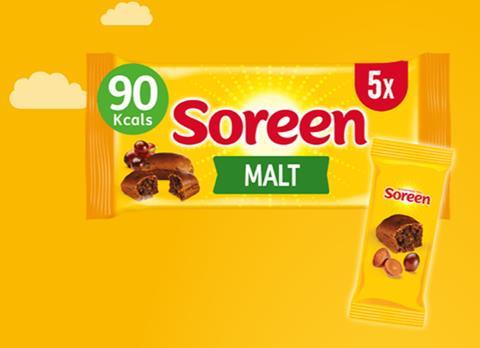
7. Value goes “beyond price”
Nevertheless, many contend that price isn’t the only factor influencing shoppers’ purchase decisions. “Offering ‘value beyond price’ is hugely important,” says Duncan Tyrrell, category lead at Soreen. “Shoppers will still pay a premium for brands but these brands will need to be clear on their benefits to consumers.”
Soreen is looking to do that by pitching its products as a “tasty, healthier choice” that typically contains half the sugar of a standard cake snack. “Health and portability are key drivers across the store in snacking,” adds Tyrrell. “Ranges need to be kept up to date and meet the needs of today’s shoppers.”
Particularly if your store is close to a school, says Anita. “We have a junior school right behind us and they are very hot on what the children can take into school,” she explains. “So we started working with local schools to make sure we were stocking snacks that were allowed in schools. It worked very well for us.”
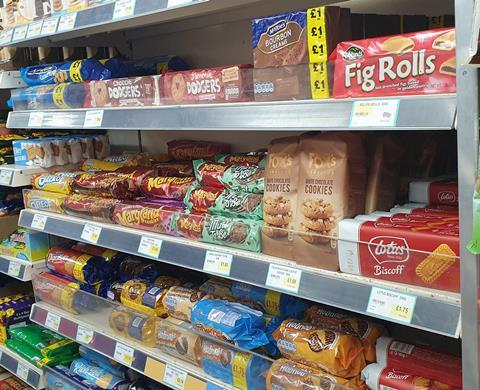
8. HFSS presents opportunities for convenience channel
The flipside of the health kick the authorities are trying to put shoppers on is the lasting appeal of sweet treats. And with larger retailers banned from displaying products deemed to be high in fat, salt and sugar (HFSS) at prominent places in store and running certain promotions on them by the new HFSS regulations, c-store operators can cash in.
“With the government’s restrictions on HFSS products coming into effect, the convenience trade is becoming all-the-more important to core snacking categories,” says Özen Turhan at Pladis. “These restrictions are unlikely to apply to smaller, independent convenience stores – presenting them with a unique opportunity.
“As convenience shoppers will be exposed to a greater spread of impulse categories, such as crisps, snacks and biscuits, it’s possible that impulse purchases will not only grow in the channel but become even more important than the top-up shopping mission.”
Time to stock up on cakes and biscuits then!





















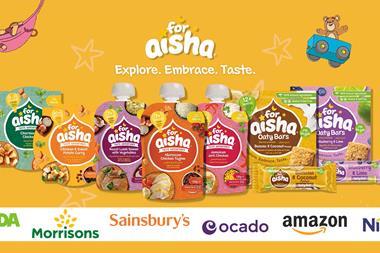
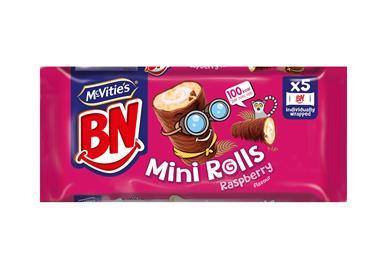

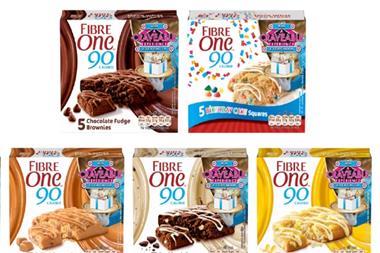








No comments yet